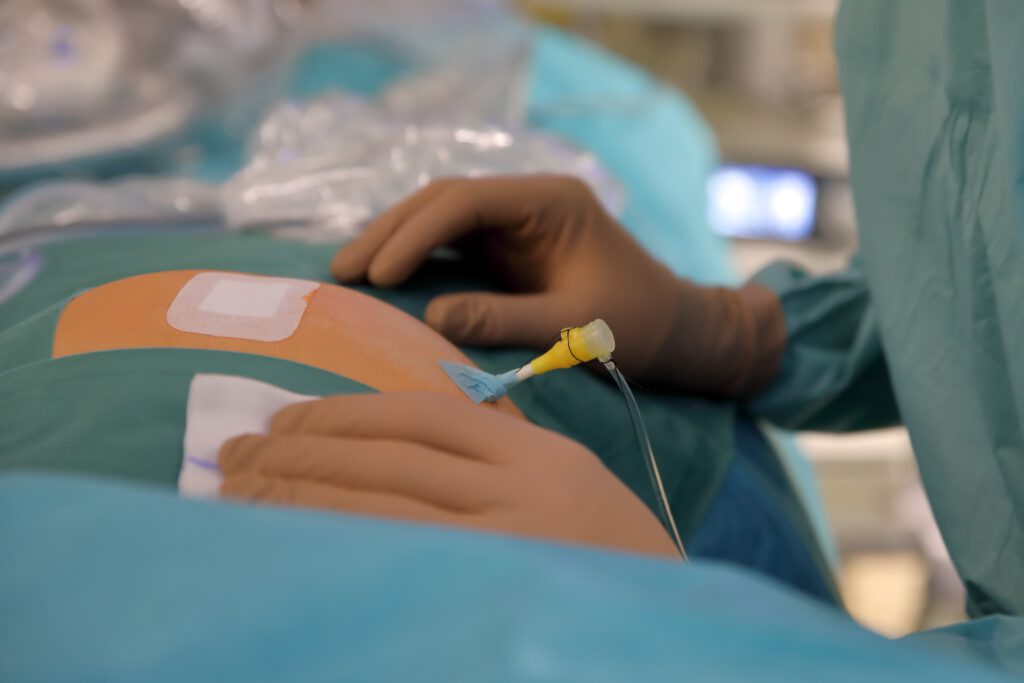In identical twin pregnancies, both unborn babies are often connected to each other via shared placental vessels (placental anastomoses). If one of the twins – as is fortunately only rarely the case – has a fatal organ malformation or a severe genetic disorder that is already present before birth, this is referred to as “discordant monochorionic twins.” In this case, the illness of one twin also puts the other at risk: if the sick child dies, the other child can lose blood through the shared placental vessels to the deceased twin. Depending on the amount of blood lost, there is then a 30-50% risk that the surviving twin will also not survive the pregnancy or will suffer severe brain damage. The cause of this high risk is the open umbilical cord vessels of the deceased twin, through which the healthy twin can also lose a large amount of blood.
To reduce this risk, the umbilical cord of the sick fetus can be closed at any time during pregnancy at the DZFT using various minimally invasive procedures – with the aim of saving your healthy child. It is important to prevent the healthy twin from suffering life-threatening blood loss and drops in blood pressure after the death of the sick twin. In the least invasive option, radiofrequency ablation, the procedure is performed with a needle with an outer diameter of less than 1.5 mm. This procedure was introduced at the DZFT in Germany. It is performed under local anesthesia of the maternal abdominal wall.

The survival rate for healthy twin siblings is around 80%, and most of them are born after the 30th week of pregnancy. At this stage, the risk of damage due to early birth is already low.
If you have any further questions about the minimally invasive treatment of “discordant twin pregnancies,” you can reach us daily between 10 a.m. and 5 p.m. at (0175) 597-1213 or send us an email. If you only reach our answering machine, please leave your name and a phone number where we can call you back.
Please note: The content of our website is for informational purposes only and is not intended to replace personal consultations with us or other recognized medical specialists in this field. For all individual questions and decisions regarding your health and that of your child, we recommend
